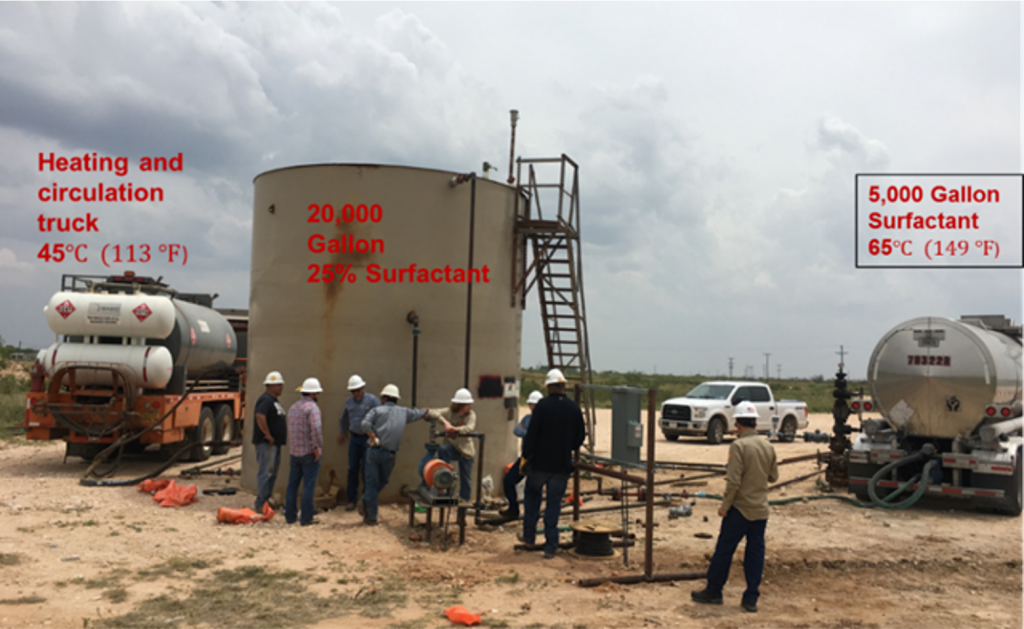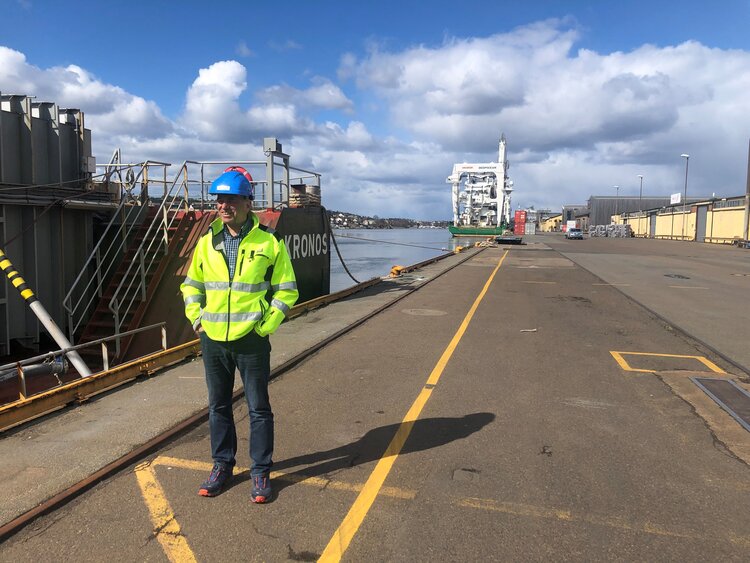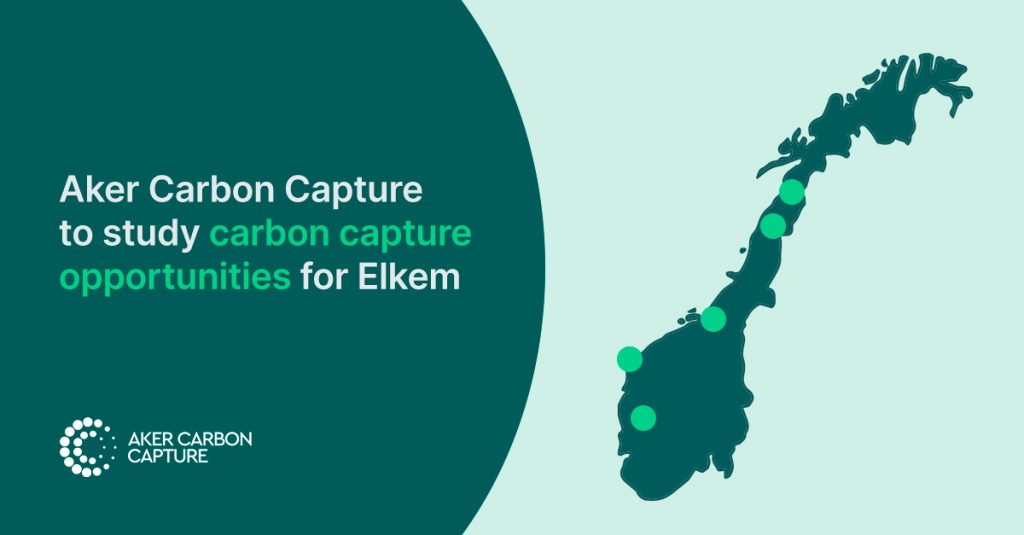Elkem to test the world’s first carbon capture pilot for smelters
It is very relevant for CLIMIT to support the world’s first CO2-capture from ferrosilicon and silicon industry. In this project, there are nine international industries collaborating in development of cost-effective CCS solutions. Knowledge from development of the full scale CCS project Longship is also applicable for this Elkem pilot
Press release from Elkem
Elkem, a global leader in silicon-based advanced materials, today announces that it will test the world’s first carbon capture pilot for silicon smelters at its plant in Rana, Norway. The project has received financial support from Gassnova CLIMIT and is a follow-up to the company’s recently launched climate roadmap to reduce emissions towards net zero while growing supplies to the green transition.
The carbon capture pilot is a collaboration between Elkem and Mo Industripark, SINTEF, Alcoa, Celsa, Ferroglobe, SMA Mineral, Heidelberg Materials, Norfrakalk, Arctic Cluster Team and Aker Carbon Capture.
The test unit will be installed at Elkem’s plant in Rana, which produces high purity ferrosilicon and Microsilica. In addition, emissions from SMA Mineral will also gradually enter the treatment plant. Aker Carbon Capture delivers the test unit, which is the only one of its kind in Norway.
The project is supported through the CLIMIT-Demo program, by state enterprise Gassnova SF. CLIMIT is Norway’s national programme for research, development and demonstration of CO2 capture and storage technology. The main goal of the project is to verify the technology on real industrial exhaust gases from smelters, in order to prepare a full-scale plant for industrial carbon capture. The program runs over two years.
“Elkem aims to be part of the solution to combat climate change – and to be one of the winners in the green transition. Our mission is to provide advanced material solutions shaping a better and more sustainable future. We have recently launched a climate roadmap detailing our ambitions to reduce emissions while growing our supplies to the green transition. Carbon capture is a key technology to reach net zero by 2050,” says Elkem’s CEO, Helge Aasen.
Elkem recently launched a global climate roadmap detailing how the company plans to reduce its total CO2 emissions by 28% from 2020-31 while growing its supplies to the green transition, thereby delivering 39% improvement of its product carbon footprint in the same period.
As a part of this work towards carbon-neutral materials production, Elkem has conducted a feasibility study for the establishment of carbon capture and storage (CCS). The purpose of the study has been to assess the technical and economic feasibility of installing carbon capture at its Norwegian plants in Bjølvefossen, Bremanger, Rana, Salten and Thamshavn.
Great relevance to other plants
“The test unit installation at Elkem Rana means that we are now moving one step forward. The work to be done in Rana will also be of great relevance to other plants both in Elkem and for other players in the industry,” says Trond Sæterstad, climate director in Elkem.
Mo Industrial Park will be the project owner and SINTEF will have a leading role in the project management of the program.
“In total the partners have identified 1.5 million tonnes of potential CO2 capture in the region. This corresponds to three percent of Norway’s total emissions, and almost one third of the emissions from the metal industry,” says Jack Ødegård, Vice President Research in SINTEF.
“It is very relevant for CLIMIT to support the world’s first CO2-capture from ferrosilicon and silicon industry. In this project, there are nine international industries collaborating in development of cost-effective CCS solutions. Important research work will be carried out by SINTEF as well. Knowledge from development of the full scale CCS project Longship is also applicable for this Elkem pilot,” says Ingrid Sørum Melaaen, Gassnovas´ Head of Secretariat CLIMIT.
“The mobile test unit is for all practical purposes a large facility in miniature. It is very exciting that we can now follow up the feasibility study and test that the technology is also suitable for large-scale smelters,” says Jon Christopher Knudsen, Chief Commercial Officer in Aker Carbon Capture
“It is necessary to cut carbon emissions. In addition, this project will create new jobs and ensure the competitiveness of the industry. This is also aligned with Mo Industrial Park’s sustainability strategy and the initiative will add important cutting-edge expertise to the region,” says Jan Gabor, Executive Vice President Property Development in Mo Industrial Park.
The project has a total budget of NOK 23.6 million, of which Gassnova CLIMIT will contribute 13.8 million and the industry will contribute with the remaining amount.
For more information
Odd-Geir Lyngstad
VP Finance & Investor Relations
Tel: +47 976 72 806
Email: odd-geir.lyngstad@elkem.com
Hans Iver Odenrud
Corporate Communication Manager
Tel: +47 958 16 230
Email: hans.iver.odenrud@elkem.com
About Elkem
Elkem is one of the world’s leading providers of advanced material solutions shaping a better and more sustainable future. The company develops silicones, silicon products and carbon solutions by combining natural raw materials, renewable energy and human ingenuity. Elkem helps its customers create and improve essential innovations like electric mobility, digital communications, health and personal care as well as smarter and more sustainable cities. With a strong track record since 1904, its global team of more than 6,800 people has a joint commitment to stakeholders: Delivering your potential. In 2020, Elkem was rated among the world’s top 5% on climate and achieved an operating income of NOK 24.7 billion. Elkem is listed on the Oslo Stock Exchange (ticker: ELK).
CO₂ foam retains more CO₂
Results from a project benefiting from CLIMIT support that has recently concluded with the title ‘CO2 Storage from Lab to On-Shore Field Pilots Using CO2-Foam for Mobility Control in CCUS’ shows, among other things, that CO2 foam retains more than ordinary CO2 injection.
Project goal
The project goal was to verify the effect of Surfactant Alternating Gas (SAG) injection in oil fields in Texas. This is the use of short, alternating injection cycles of surfactant (soap) and gas in order to generate CO2 foam deep inside the reservoir.
Onshore fields in Texas have both CO2 and connected infrastructure available, while operating costs are low. CO2 expertise in industry is high and the pilot results can be gathered quickly due to the short distances between the wells. This is advantageous in terms of scaling it up for use on the Norwegian Continental Shelf.
An energy transition technology developed at the University of Bergen used CO2 foam mobility control in combined CO2 EOR and carbon storage as part of CCUS.
The research findings show the following
The research findings from the laboratory and the field pilot demonstration showed that CO2 foam:
- retained more CO2 than normal CO2 injection
- reduced CO2 mobility and improved CO2 ‘cleansing efficiency’ (displacement efficiency)
- produced more oil than regular CO2 EOR
- improved CO2 utilisation
- reduced operating costs and increased revenues
Dialogue with stakeholders in relation to the implementation of the innovation
‘These findings use fresh data, but we are already engaged in dialogue with multiple commercial stakeholders in relation to the implementation of the innovation,’ says project leader Arne Graue of the University of Bergen.
He adds that the technology has the potential to enable a sustainable financial framework for industrial participation in carbon storage on the global stage. According to Graue, the technology may help countries with levels of carbon emissions to realise CCUS, with a particular focus on Southeast Asia.

The delivery and mixing of surfactant solution directly to the wellhead at an onshore oil field in Texas.
Builds carbon capture plants with knowledge from Langskip and CLIMIT projects
– Our participation in the CLIMIT-supported project “CCS cluster on Øra” and the visit to the pilot plant at Fortum Oslo Varme at Klemetsrud, has been important to mature our ambitions in carbon capture, says CEO of Carbon Centric Fredrik Häger.
Will offer turnkey carbon capture plants for incinerators
Carbon Centric, which is a spin-off of Østfold Energi, will offer turnkey carbon capture plants for incineration plants that are both faster and cheaper than what has been possible so far. The company specializes in carbon capture plants for small and medium-sized combustion lines with emissions of between 10,000 and 100,000 tonnes of CO2 per year. Now they will raise money to build a carbon capture plant at Østfold Energi’s waste incineration plant in Rakkestad.
Sharing knowledge and experiences
Østfold Energi has been involved in the CLIMIT demo-supported projects around the Øra cluster and BorgCO2 from the start. Here is also Fortum Olso Varme (FOV), which is part of the Langskip project to share its expertise and experience. The goal of the Langskip project is to pave the way for new CCS projects, so that the probability of achieving the goals in the Paris Agreement increases. Everyone involved in Langskip is obliged to share knowledge and experience beyond what is usual for an industrial project.
– We have learned a lot from this cluster collaboration, where we have looked at everything from various carbon capture technologies – to how to build a complete value chain within CCS, says Häger.
Collaborating with the supplier of the pilot to Fortum Oslo Varme
It is the Norwegian company KANFA that has developed the design Carbon Centric will now use. By using smaller and standardized dimensions, they believe that modular carbon capture plants can be produced almost as off-the-shelf. According to the press release, this means that incineration plants can cut their greenhouse gas emissions in a faster, cheaper and safer way.
It was KANFA who delivered the pilot to FOV, which was mainly financed by the full-scale project. They have also been central in the cost-reducing measures FOV has taken after the preliminary project «DG3».
The company was also involved in a CLIMIT demo project called Offshore CCS, which looked at the design of offshore CO2 capture facilities. The project was led by the oil company OKEA.
CSLF Technology Roadmap 2021
The Carbon Sequestration Leadership Forum (CSLF) Technology Roadmap 2021 is an update of the 2017 version, based on reported progress and published documentation on carbon capture, utilisation and storage (CCUS) activities between October 2017 and February 2021.

The road map
The roadmap provides recommendations to ministers of the CSLF member countries, and their climate and energy policymakers, on technology developments that are required for CCUS to fulfill the CSLF mission to facilitate the development and deployment of CCS technologies via collaborative efforts that address key technical, economic, and environmental obstacles.
Borg CO₂ and Northern Lights to collaborate on carbon capture and storage
Borg CO2 and Northern Lights have signed a Memorandum of Understanding (MOU) to explore the feasibility of CO2 capture, transport and storage solutions for industrial partners in the Nedre Glomma region.
Borg CO2 is supported by CLIMIT.
Text: Borg CO2 and Northern Lights
A joint project between 18 industry partners
Borg CO2 is a joint project between 18 industry partners and the port of Borg, which will serve as host for a future CO2 loading terminal. The plan is to transport captured CO2 to this terminal, where it will be loaded onboard a Northern Lights operated ship for transport to the intermediate storage terminal at Øygarden on the Norwegian west coast. From Øygarden the CO2 will be injected into a 100 km long pipeline and injected into permanent storage in a reservoir 2.6 km below the seabed.
Borg CO2 is developing a carbon capture and storage (CCS) solution for emissions from industrial facilities in Fredrikstad, Sarpsborg and Halden. The industrial cluster employs 1,400 people and is responsible for emissions of almost 700,000 tonnes of CO2 annually. The aim is to capture and store up to 90% of the total emissions, or around 630,000 tonnes a year.
Northern Lights delivers CO2 transport and storage as a service and aims to enable the decarbonisation of industrial emissions and to facilitate the removal of CO2 from the air. The company is a joint venture between partners Equinor, Shell and Total.
“This collaboration with Northern Lights is important for the development of carbon capture and storage solutions in the region. Without the pioneering work done by Northern Lights to create an open source third party storage facility, carbon capture would not be possible in our region”, said Tore Lundestad, managing director of Borg CO2 and Harbour Master for the port of Borg.

Aker Carbon Capture to study carbon capture opportunities for Elkem
Aker Carbon Capture has signed an agreement with Elkem to conduct a feasibility study for the establishment of carbon capture at its Norwegian smelters, and to support the company’s long-term goal of achieving carbon-neutral metal production.

Financial support through the CLIMIT programme
Source: Aker Carbon Capture
Aker Carbon Capture to study carbon capture opportunities for Elkem Aker Carbon Capture has signed an agreement with Elkem to conduct a feasibility study for the establishment of carbon capture at its Norwegian smelters, and to support the company’s long-term goal of achieving carbon-neutral metal production. The purpose of the study is to assess the technical and economic feasibility of installing carbon capture at Elkem’s Norwegian plants in Bjølvefossen, Bremanger, Rana, Salten and Thamshavn. The project has received financial support through the CLIMIT programme by Gassnova, the Norwegian state enterprise to further develop CCS technologies. The findings from the study will be transferred to Elkem’s plants outside Norway, including its ferrosilicon plant in Iceland.
“Our HSE-friendly solutions have been proven at industrial sites across Europe since we delivered the Technology Center Mongstad back in 2012. By applying Aker Carbon Capture’s proven and HSE-friendly solutions, companies like Elkem can reduce CO2 emissions without introducing new hazardous emissions on site,” says Valborg Lundegaard, Chief Executive Officer of Aker Carbon Capture. “The volume of annual CO2 emissions from the smelters are comparable to the Brevik CCS project at a cement plant in Norway, which means we will build on the experience from realizing this project”.
Elkem has signed an agreement with Aker Carbon Capture to evaluate and study technological designs and solutions of a capture facility, facilities for liquefaction and upload of CO2 to transport ships from the Northern Lights storage project, which is part of the Norwegian government’s Longship initiative to establish the whole CCS value chain.“
Elkem
Elkem is among the global leaders in the environmentally responsible manufacture of advanced materials. We have already come a long way with our biocarbon strategy, having achieved 20 percent reduction of direct fossil CO2 emissions from our Norwegian smelters using biocarbon. By combining our biocarbon strategy with carbon capture, high energy efficiency at the facilities and other environmental efforts, we have the opportunity to take significant steps forward”, says Trond Sæterstad, climate director at Elkem. The carbon capture study will be completed in the second quarter of 2021. The independent Norwegian research organisation SINTEF and Norwegian consultancy corporation Norsk Energi will contribute as partners in the project.
